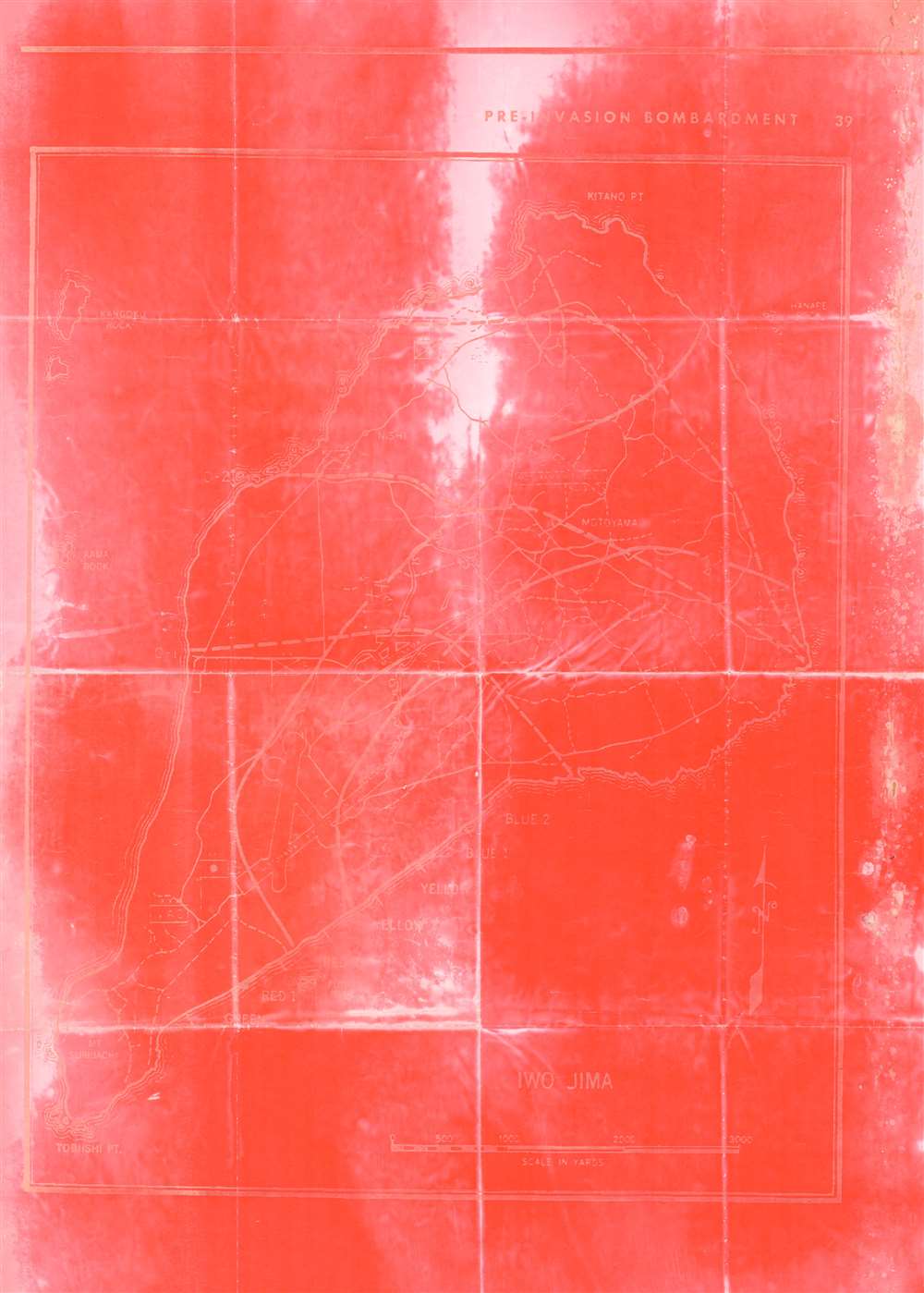This item has been sold, but you can get on the Waitlist to be notified if another example becomes available, or purchase a digital scan.
1945 Map of Iwo Jima Before the U.S. Invasion
IwoJimaBombardment-unknown-1945$187.50

Title
Pre-Invasion Bombardment.
1945 (undated) 26.5 x 20.25 in (67.31 x 51.435 cm) 1 : 13090
1945 (undated) 26.5 x 20.25 in (67.31 x 51.435 cm) 1 : 13090
Description
This is a 1945 map of Iwo Jima created for the pre-invasion bombardment by the U.S. Navy. Japanese airfields are illustrated and labeled, along with presumed positions of Japanese units. Mt. Suribachi, the site of the immortalized flag-raising captured in Joe Rosenthal's photograph, appears in the lower left corner and is identified. Seven invasion beaches (Green 1, Red 1, Red 2, Yellow 1, Yellow 2, Blue 1, Blue 2) are labeled on the island's southeast coast. Thick lines emanate from around the invasion beaches and likely illustrate projected advances from the beachheads by the invading Marines.
The Pre-Landing Bombardment
The commander of the Marine landing force, Major General Harry Schmidt, initially requested a ten days of heavy shelling before the landings. Read Admiral William H. P. Blandy, commander of the Amphibious Support Force, refused this request believing that such an extended bombardment would not allow enough time to replenish ammunition before the landings. Schmidt then requested nine days of shelling, which Blandy denied on the same grounds, and only agreed to three days of shelling before the landings. The short nature of the bombardment led to hard feelings among the Marines, with many believing that Marine lives would have been saved if there had been more shelling before the invasion.The Battle of Iwo Jima
The Battle of Iwo Jima took place between February 19, 1945 and March 26, 1945. Two Marine divisions (the 4th and the 5th) landed on Iwo Jima and immediately faced heavy artillery fire. The beaches were surrounded by fifteen-foot-high slopes of volcanic ash. The ash made progress inland difficult. Some of the bloodiest fighting of the Pacific War took place during the five-week battle and of the 21,000 Japanese soldiers defending Iwo Jima, only 216 were captured. Japanese combat deaths were three times higher than American combat deaths. Nonetheless, the Battle of Iwo Jima was the only time American total casualties (dead and wounded) exceeded Japanese casualties.Publication History
Undated and unsigned, very little publication information is available for the present map. We know that a unique heat based printing process was used in its production. Since it was used to plan or carry out the pre-invasion bombardment of Iwo Jima, it is likely that very few examples were created and, of those, even fewer survived.Condition
Average. Barely legible but all content intact.

